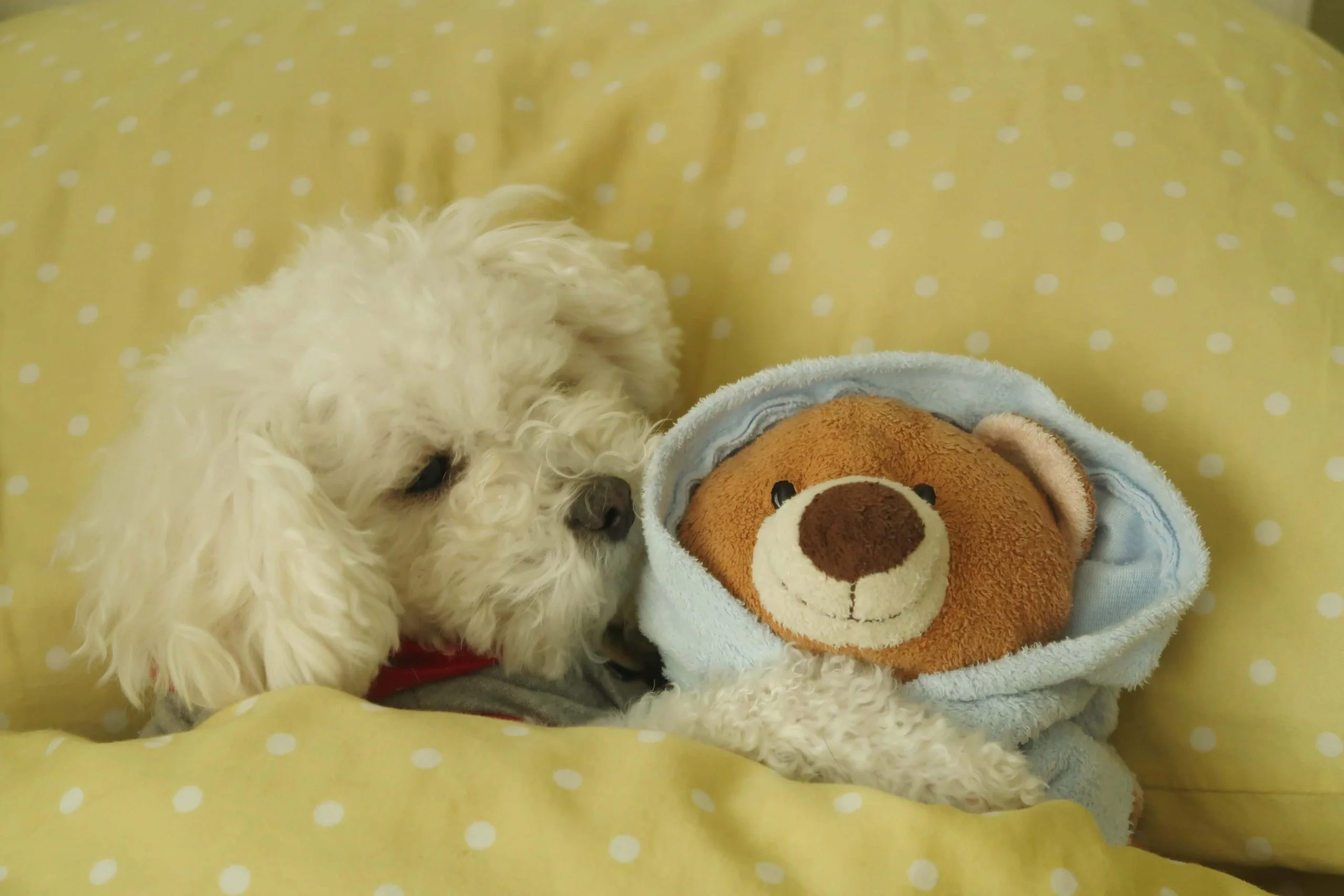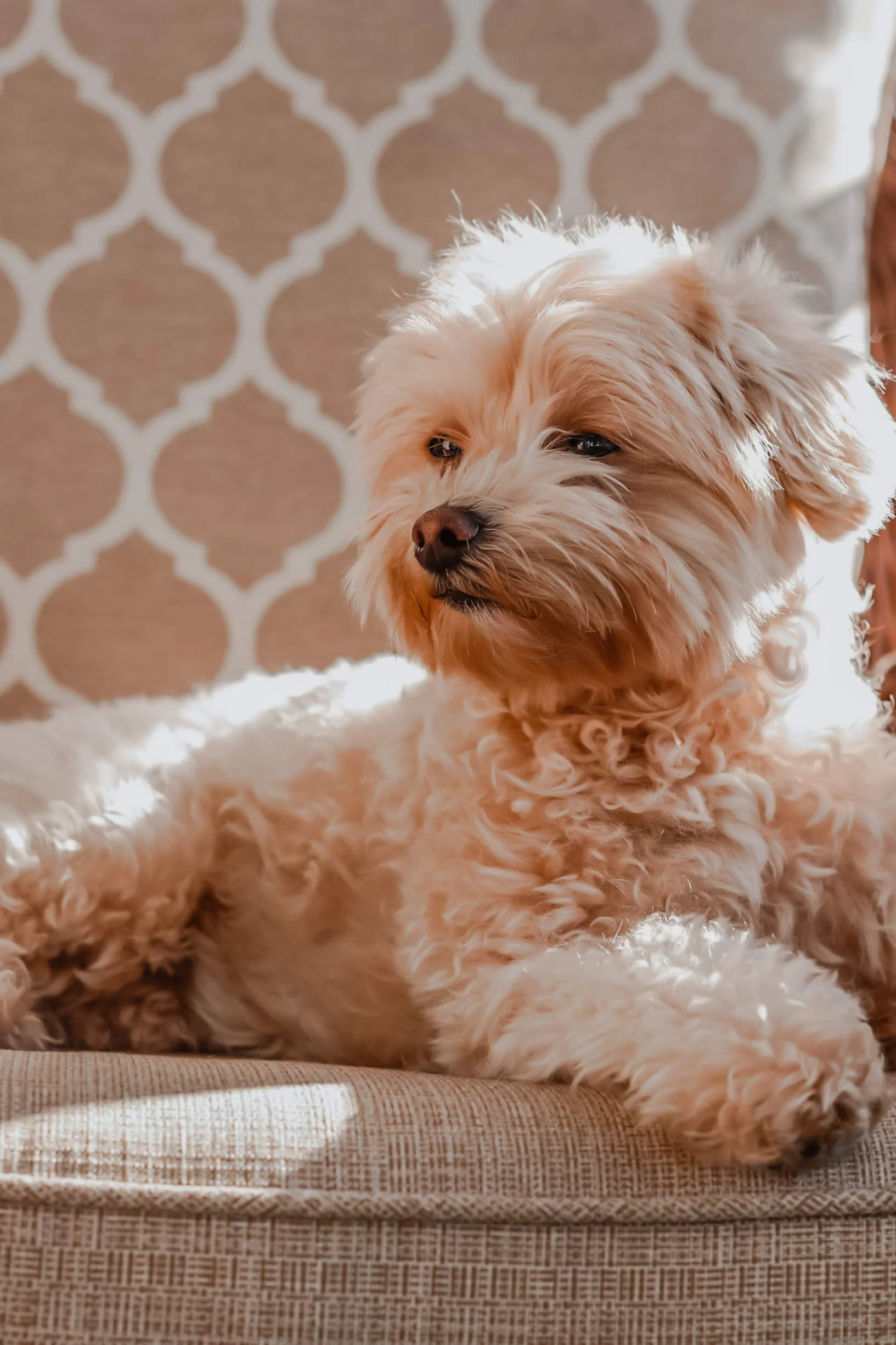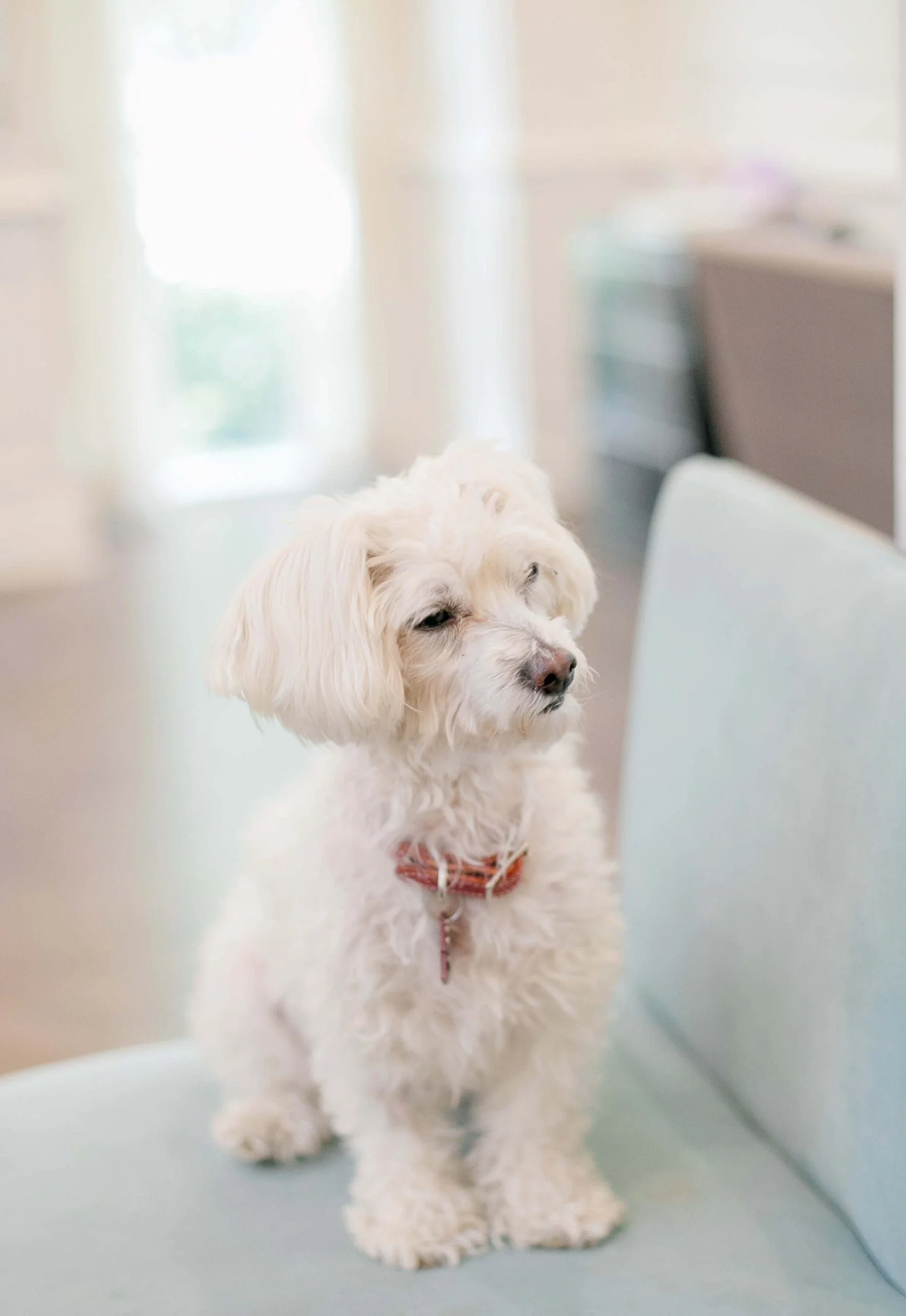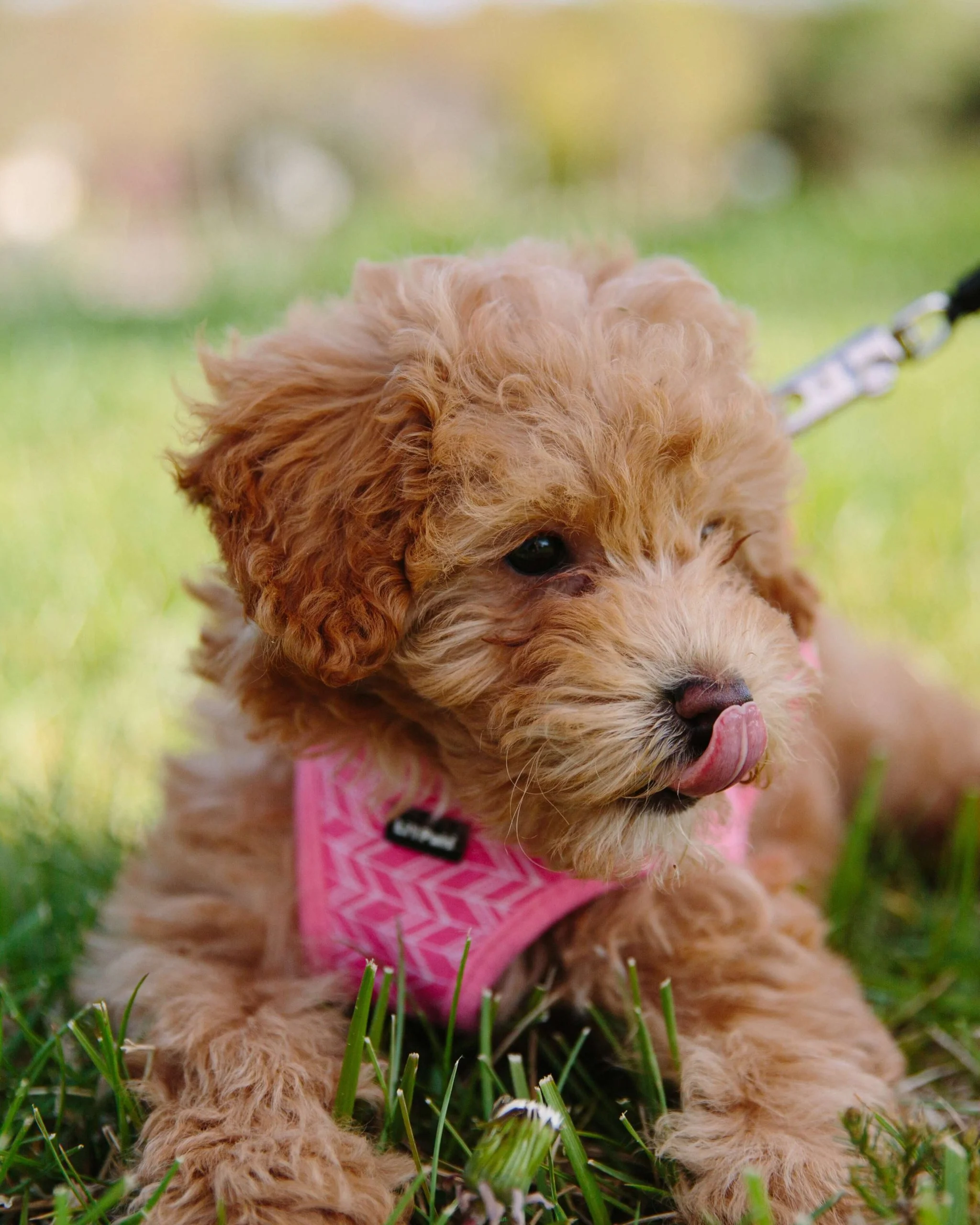
If you’re the pet parent of a Maltipoo, you’ll know there are lots of endearing things about them. They’re often cuddly, loyal, and playful, and their small size means that indoor play doesn’t lead to catastrophic damage to your home! But how big should a Maltipoo be? And how quickly should they grow? In order to spot a problem, it’s important to have an idea of the expected growth rate of your Maltipoo puppy.
What is a Maltipoo?
A Maltipoo is a cross-breed dog that mixes the Maltese Terrier and Poodle breeds. They usually have a white or light-colored coat, and it’s usually curly. This means that regular grooming is important, to avoid mats, knots, and debris.
How big is a full-grown Maltipoo?

Although a dog’s weight and height are usually impacted by their sex, there is not much discrepancy between the size of a male and a female Maltipoo.
The exact size of a Maltipoo depends on the size of the Poodle in its parentage. While it may seem unlikely that a Standard Poodle would be bred with a Maltese Terrier, it is not impossible, especially with artificial insemination. Therefore, a Maltipoo resulting from the breeding of a Standard Poodle would likely be larger than a Maltipoo whose parent was a Miniature or Toy Poodle. Of course, if a ‘teacup’ Maltese Terrier were used, this would mean the Maltipoo puppies were more likely to be smaller.
Although a dog’s weight and height are usually impacted by their sex, there is not much discrepancy between the size of a male and a female Maltipoo. Therefore, the normal weight and height range of a full-grown, adult Maltipoo would be 5 to 25 pounds and 6 to 14 inches. Of course, the shorter and lighter dogs in these ranges will be Toy Maltipoos, while the taller and heavier ones will be Miniature Maltipoos.
Maltipoo weight chart
A general rule of thumb for predicting your Maltipoo puppy’s weight gain is to take their weight at 18 weeks and double it. This will give you their expected adult weight, and although it isn’t guaranteed, it’s a good rough guide.
The following table is intended to give an idea of the anticipated growth rates and weights of Maltipoo puppies:
| Minimum Weight (Toy) | Maximum Weight (Toy) | Minimum Weight (Miniature) | Maximum Weight (Miniature) | |
| 2 months | 1 lb | 4 lbs | 3 lbs | 6 lbs |
| 4 months | 2.5 lbs | 7 lbs | 5.5 lbs | 12 lbs |
| 6 months | 3.5 lbs | 9 lbs | 7 lbs | 17 lbs |
| 9 months | 4 lbs | 12 lbs | 9 lbs | 21 lbs |
| 1 year | 5 lbs | 15 lbs | 12 lbs | 25 lbs |
Why might a Maltipoo puppy not gain weight as they should?

If your pup isn’t growing well and you can’t work out why, it’s a good idea to get a vet’s opinion, especially if they have any symptoms of being unwell.
It’s really important, if you have a puppy, to keep an eye on their growth, appetite, and behavior, to make sure they’re gaining weight and developing as they should. Here are some possible reasons why your Maltipoo puppy might not be hitting the growth rate you expected:
Poor diet
It’s important to feed a puppy an appropriate diet, containing plenty of protein for growing their soft tissue, as well as plenty of calories for energy. After all, how else are they going to fuel their zoomies sessions or crazy playtime? So, it’s a good idea to choose a dog food that is specifically formulated for puppies, as well as containing good quality ingredients and excellent sources of protein.
Parasites
A high worm burden is one of the more common reasons for poor weight gain in puppies. So, it’s crucial to use regular parasite treatments, and keep an eye out for worms in your puppy’s poop. Puppies should be wormed monthly until 6 months old, at which point your veterinarian can help you create a worming regime that suits your dog’s needs.
Health conditions
From hypothyroidism and pituitary dwarfism to a portosystemic shunt, there are plenty of health conditions that can affect young puppies. Most are congenital or genetic, meaning the puppy has had the condition or been prone to developing the condition since birth. If your pup isn’t growing well and you can’t work out why, it’s a good idea to get a vet’s opinion, especially if they have any symptoms of being unwell.
Bullying
It’s quite common for young puppies to be bullied by the remainder of the litter until they leave for their new home, meaning they could be last to the food bowl at mealtimes. If you have other pets in your home who could be intimidating your pup, they might not be gaining weight because they’re not getting access to the food they need.
What should you do if your Maltipoo puppy isn’t growing as they should?

Even if your puppy has no symptoms, there could still be an underlying reason why they are not gaining weight and a vet could help you identify it.
If your puppy isn’t growing at the rate they should, you should make an appointment with a veterinarian. This is especially important if they have symptoms, like vomiting, diarrhea, lethargy, or wobbliness. However, even if your puppy is behaving normally and has no symptoms, there could still be an underlying reason why they are not gaining weight. Your veterinarian may suggest a blood sample, feces sample, or other tests to help get to the bottom of the problem.
Summary
Keeping tabs on your puppy’s growth is an important part of the responsibility of being a new pet parent. The information in our Maltipoo weight chart should help guide you, but if you have any concerns about your puppy’s weight it’s best to speak to a veterinarian.
FAQ
How can I predict my Maltipoo’s weight?
It’s impossible to predict any puppy’s adult weight with absolute certainty, but doubling their weight at around 4 months should give you an idea of their estimated adult weight.
How much should a Maltipoo weigh at 3 months?
Depending on whether they are a Toy Maltipoo or a Miniature Maltipoo, a 3 month old Maltipoo puppy could weigh anywhere from 1.5 lbs to 9 lbs.
At what age are Maltipoos full-grown?
Maltipoos will usually reach their adult size before they are a year old. In fact, many will be fully grown at 10 or 11 months.



